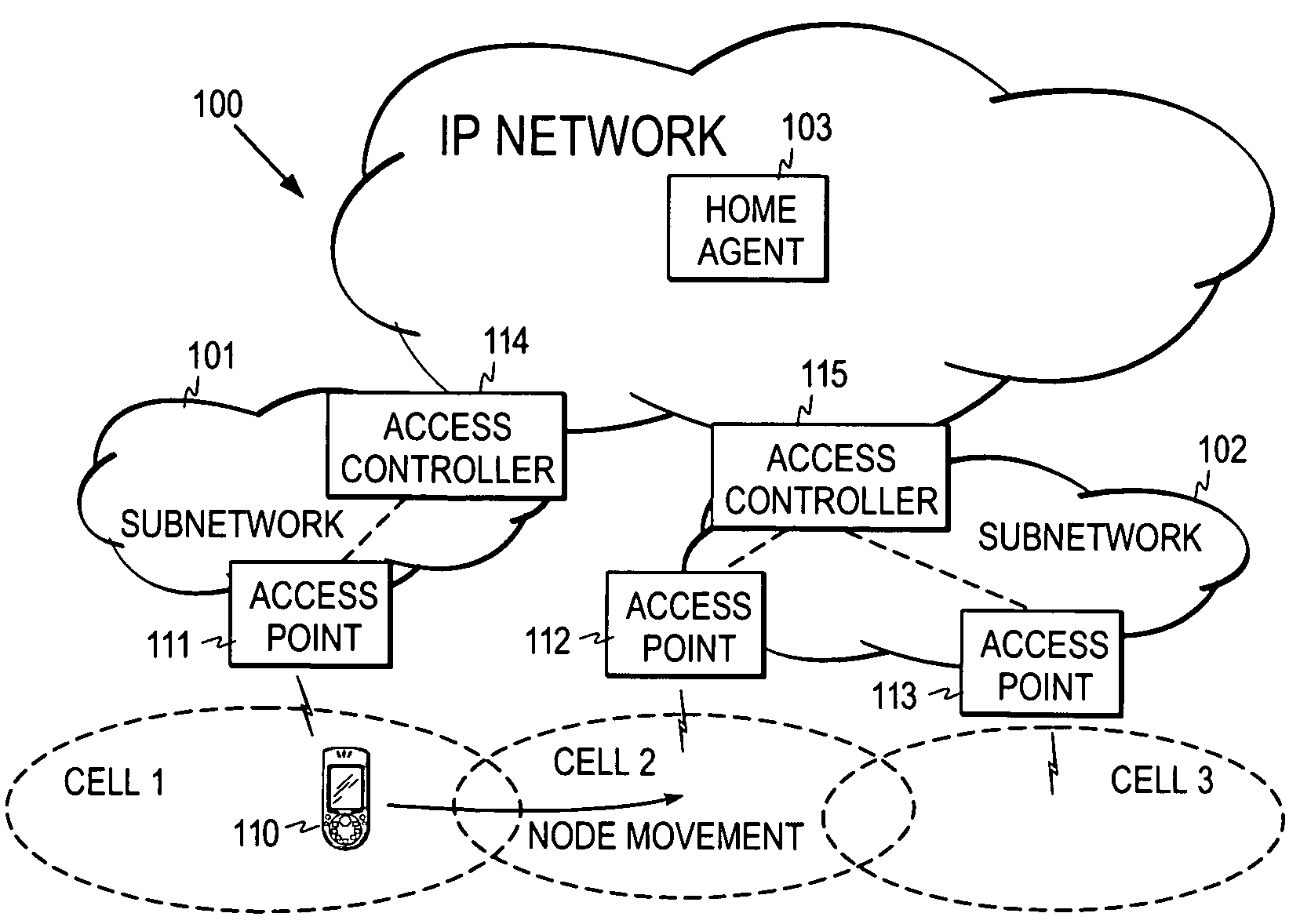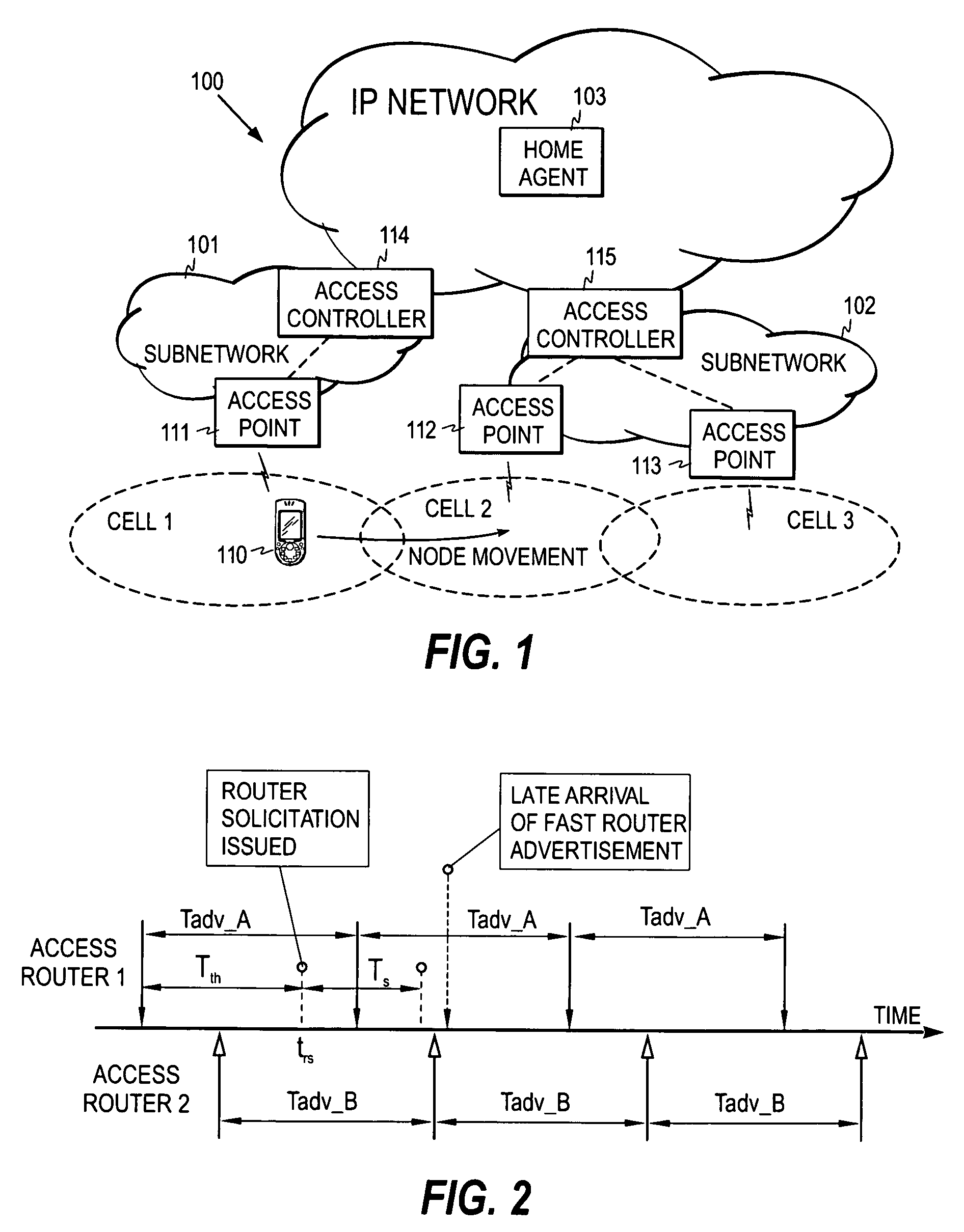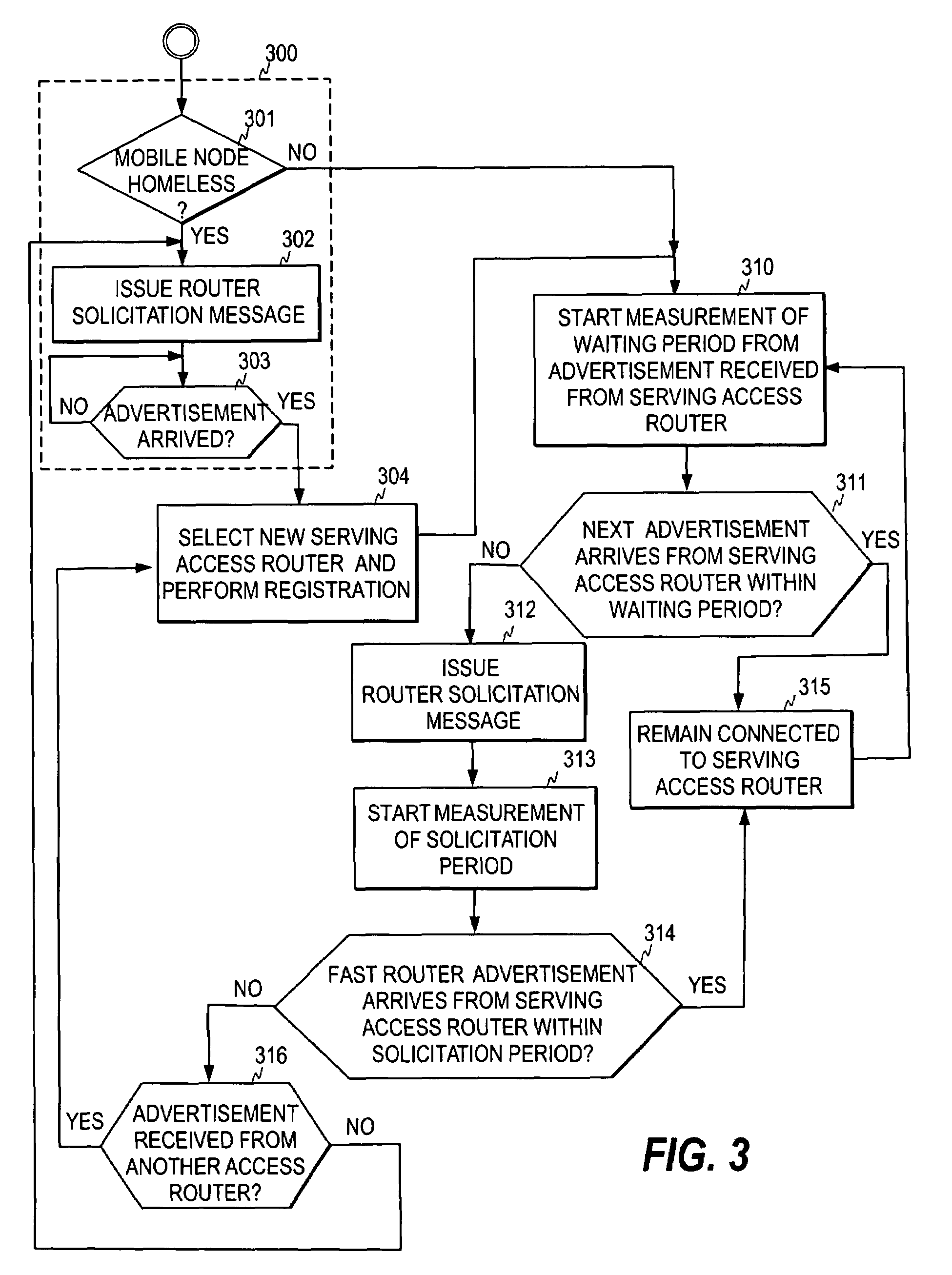Selection of network access entity in a communication system
a communication system and network access technology, applied in the field of network access entity selection in the communication system, can solve the problems of lcs method being rather high, affecting the effect of movement detection delay, and affecting the servi
- Summary
- Abstract
- Description
- Claims
- Application Information
AI Technical Summary
Benefits of technology
Problems solved by technology
Method used
Image
Examples
Embodiment Construction
[0030]FIG. 1 shows an example of a typical communication environment in which the present invention can be applied. The environment typically comprises several sub-networks 101 and 102 within an IP network 100, such as the Internet. It is further assumed here that a mobile node 110 is roaming outside its home network, i.e. its current point of attachment to the IP network is in a sub-network that is not its home network. The home agent 103 of the mobile node captures all IP packets sent to the home address of the mobile node, and forwards them to the current IP address of the mobile node, called the care-of address. When the mobile node moves, it registers its current care-of address with the home agent so that the home agent can forward the packets to the mobile node. The above-described micro-mobility architecture may also be utilized to reduce the total number of registrations. In FIG. 1, it is assumed that access points 111 to 113, such as Wireless Local Area Network (WLAN) acce...
PUM
 Login to View More
Login to View More Abstract
Description
Claims
Application Information
 Login to View More
Login to View More - R&D
- Intellectual Property
- Life Sciences
- Materials
- Tech Scout
- Unparalleled Data Quality
- Higher Quality Content
- 60% Fewer Hallucinations
Browse by: Latest US Patents, China's latest patents, Technical Efficacy Thesaurus, Application Domain, Technology Topic, Popular Technical Reports.
© 2025 PatSnap. All rights reserved.Legal|Privacy policy|Modern Slavery Act Transparency Statement|Sitemap|About US| Contact US: help@patsnap.com



